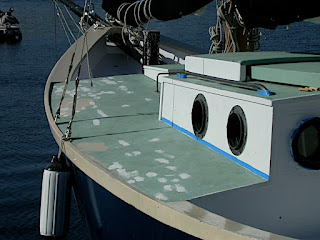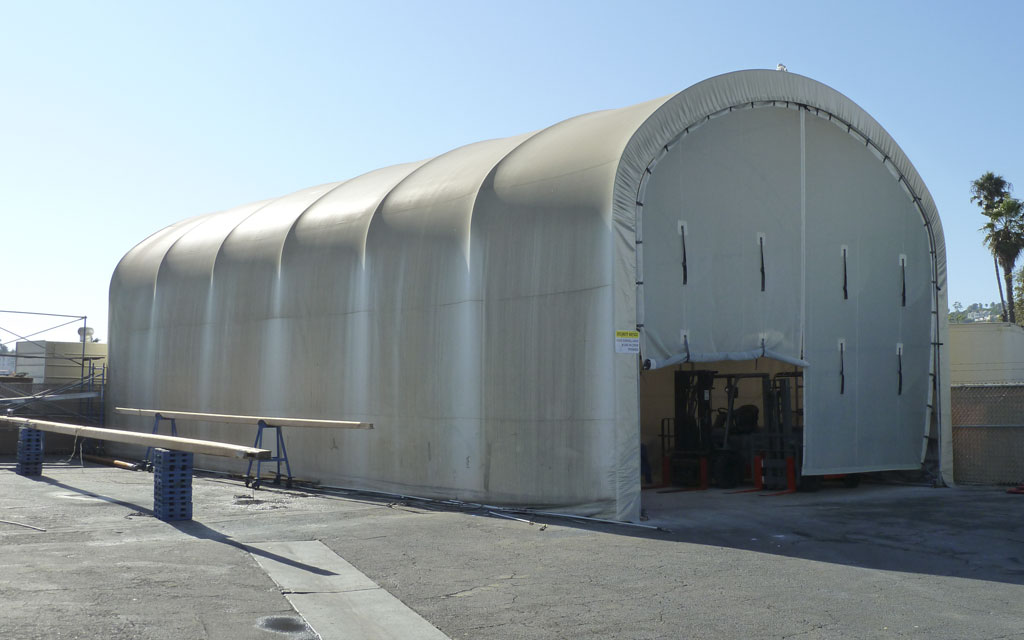 |
| The Hobie Mirage Drive in Action All KINDS of things come to mind! |
Lesser artist borrow,
Great artists steal.
-- Igor Stravinsky
Mix and Match
One of the wonderful aspects of designing on so versatile a platform as the box barge is that almost any idea afloat can be appropriated and adapted.
Used to be walking the docks, or perusing library classics was the way to scan for ideas. Nowadays - with so many classic boats and good books gone over the bar - I stroll the internet. Most search engines allow image searches. With the right keywords, it's amazing what you can find.
Here are a few sources I've found attractive...
 |
| Gilmer BLUE MOON From the UnlikelyBoatBuilder |
From early on, I've admired Thomas Gilmer's BLUE MOON. One of the attractive features is the flush mid-deck with a trunk cabin aft and large hatch forward. Cockpit and foredeck are sunk below sheer height for secure work decks. I've used this layout in LUNA (based on Bolger's AS29) and WAYWARD (ex T32x8 LUNA).
*****
 |
| Once you have the mast, why not make a crane of it? |
Howzabout an A-frame mast that doubles as a crane? And speaking of salty work barges, Tad Roberts doodled this next one around an old engine he came across...
 |
| Doodle by Tad Roberts |
*****
The possibilities of what we could build on top of 'em are endless!
 |
| Traditional fishing boats on Lake Como |
 |
| Hmm... |
| From Kerala India |
 |
| If ya can fold out a trailer, why not a barge? |
 |
| Waste Not! |
*****
These are but a taste of what's possible!
That's the joy of building a box... it frees you to think out side of one.

Agree with the overall premise. While working on my own design, although I admit to periodic paralysis from fear of not "doing it the right way", I've enjoyed the freedom that the box barge shape affords. It has allowed me at least a prayer of indulging my desires for multifunctionality.
ReplyDeleteThanks for including cranes in this post. A topic that's been on my mind of late. Despite looking simple, they are deceptively complex (maybe only to me), especially in the case of designing one that can be singlehanded and not a constant deck obstacle. Still on the hunt for the right idea or design. Your A-frame suggestion is intriguing.
My two major thought obstacles at present:
1. What to do with the crane parts, especially the heavy ones, when not "craning".
2. Starting with the simplest vertical movement system (not that tough), how to design in the need for lateral movement (at least 270 degrees around the vertical support).
In short, accomplish most of this in a DIY, cheap, light way:
http://www.angliahandling.co.uk/resources/images/jib-ub1.jpg
Hi Yoda,
ReplyDeleteI keep being drawn to a basically flat deck barge with some big hatches and then going total flexispace... structures that can be swapped out, folded out tent structures, ridge pole (dropped mast) tarp shelter, etc... . Anke's not so keen on that approach, for now, but who knows?
Basically, lots of room to experiment with low cost of 'failure'.
RE Cranes... Cranes are probably next week's post as I've got them on my mind.
Fortunately, there are many quick and dirty types.
My own preference is to work a crane into a sailing rig, solving the stowage problem. In both cases, the main spar's job is to get a point of purchase lifted high.
For now, take a look at Thame's barge sprit rigs... they are specifically evolved/designed for using the sprit as a cargo boom.
As far as rotation goes, connections with a lot of play (such as snotters, parrels, etc), are cheap and flexible.
Most of us can be a lot less ambitious... mostly craning groceries and the like out of a tender. That requires much less of a boom/power arrangement than actual working vessels.
The link you provide is interesting for lifting with a short spar, but for cruisers it's heavy and expensive. You get the equivalent kind of lift in Tad Robert's version, but it could double as a sail (with the boom reversed... maybe the mast moved fwd), and it would be a lot cheaper and probably lighter.
Dave Z
Dave,
ReplyDeleteGood info. To be clear, I'd never put such a heavy, clunky, commercial, I-beam jib crane on a triloboat. I grabbed the drawing from the web as a quick way to illustrate the type of movement that I preferred (simple in three axes) vs. the sprit deal. That said, I have been wondering if a very light aluminum i-beam could double as a sailing/crane sprit/boom. If so, a detachable small winch could be used only when needed, more or less as shown in that drawing. Might be leaning too far toward complexity though.
"My own preference is to work a crane into a sailing rig, solving the stowage problem."
Agree. Trying to figure out how to not get tangled in the plethora of ropes needed to make a sprit-based crane work. Plus, how to avoid the "Tie this off, OK, run over here, OK, tie this off, OMG, it's slipping, run over ..." phenomenon. I get mental images of a suspended cargo net of stuff abruptly headed down, while my foot stuck in a rope abruptly heads up. Rotating, upside-down view of the world. ;-) Some kind of mechanized jib crane such as the one in the drawing avoids all of that nonsense.
Such a crane aside, my only other issue at present is understanding how a boom, by necessity installed so low on the mast, can get the job done, especially on a boom-less rig. I guess a sprit would be attached higher on the mast.
I have actually investigated Thames barges to include contacting their associations, etc. Unfortunately, there seems very little info to be had about how their cranes actually operated. No video, and only a few grainy photos.
====
"I keep being drawn to a basically flat deck barge with some big hatches and then going total flexispace... structures that can be swapped out, folded out tent structures, ridge pole (dropped mast) tarp shelter, etc."
I like it as well, within limits. If I started to feel like I was sleeping in a mini-warehouse, or my swappable whatever kept flopping over on the floor, that would get on my nerves. Been thinking about a simple rope between masts as a tarp ridgeline, clothesline, etc.
Looking forward to your "crane" post, whenever that is convenient for you to share.
Yoda
An easy upgrade from mast to crane is a detachable boom, with it's outboard end hoisted by the halyard (caribiners make easy transfers). A couple of guy lines to control swing and you're good to go.
DeleteJunk Rig has a nice option for stowing a cargo boom vertically... there is an area along the mast, opposite the sail called the CHIMNEY which is not swept by sail or battens. Perfect for vertical storage.
Dave Z
You KNOW we're seriously geeking out here when we're all sharing sexy barge esoterica. You are so right: so many cool possibilities with all that deck area and shallow draft to boot.
ReplyDeleteHere's links to some Atkin derrick barges. This first one draws only 5" with a tunnel for the prop. What fun it would be in just 17 feet of length:
http://www.atkinboatplans.com/Utilities/Huskie.html
And here's a bigger 30' one by Atkin that would be tons of fun for raising small sunken boats, sinking pretty hefty moorings, etc.. I'd motorize it:
http://www.atkinboatplans.com/Misc/Giant.html
Atkins plans prices are all over the map. A really nice 40 foot motor patrol boat goes for $65. A super nice 45 sharpie (Missie and Laurie) goes for $300. Atkin boat designs site is in my faves list. Just such pleasure to go peruse all that marine architecture.
Barge Geeks R' Us! 8)
DeleteThose Atkin boys know what they're about! Been a fan of theirs lo these many a year.
Dave Z